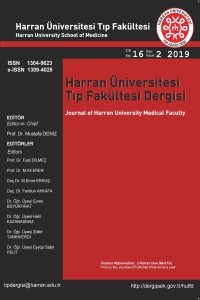
Harran Üniversitesi Tıp Fakültesi Dergisi
Yazarlar: Murat AKKUŞ, Tuba APAYDIN
Konular:Tıp
DOI:10.35440/hutfd.754903
Anahtar Kelimeler:Pectus carinatum,Abramson procedure,Minimally invasive repair pectus carinatum
Özet: Background: Pectus carinatum (PC) presents with anterior protrusion of the chest wall in the childhood period and becomes more prominent during puberty. Optimum time for surgery concerns the life period with flexibility of the chest wall. However, today Abramson operation is performed for younger and adult patients by many surgeons. In this study, we aimed to compare the complication results of Abramson surgery for PC between pediatric, adolescent and adult groups, to indicate the optimal appropriate period for this surgery. Materials and Methods: From 2012 to 2018, 178 cases had symmetric-asymmetric PC identified. A total of 63 patients who could not use or had unsuccessful outcomes with a brace therapy were treated with Abramson surgery in our clinic. We classified patients into three groups: Pediatric (patients younger than 12 years), adolescent (patients between 13 and 16 years); and adult (patients between 17 and 20 years). We evaluated patients' demographics, and compared results of surgery, duration of hospitalization and complication rates. Results: Fifty patients were male and 13 were female. The age range was 8 to 20 years (mean 14.5±2.5 years). Symptomatic patients and chest pain in the preoperative period were seen more frequently in patients with older age, but this was not statistically significant (p:0.061, p:0.901, p:510). There was no significant difference between groups with respect to duration of operation, and duration of follow up (p:0.338, p:0.646, p:0.668). In the early 30-day postoperative period, no mortality was observed. In logistic regression analysis, postoperative complications increased in patients older than 17 years, but this wasn't statistically significant (p:0.256). Conclusions: The Abramson procedure is an effective and successful method with low complication rates in the group who do not benefit from a brace for treatment of pectus carinatum. However, complication rates may increase in the adult period, though this was not statistically significant.